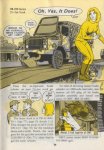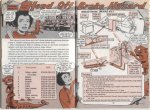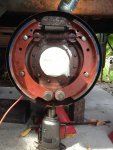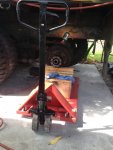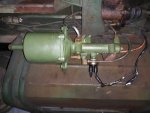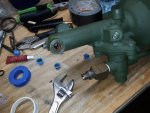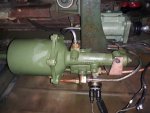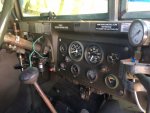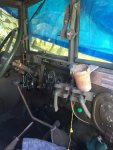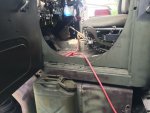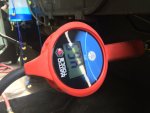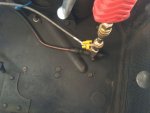Before you do the expensive stuff, do two things:
1) Check the bottom of the master cylinder reservoir for rust or crud in the small bleed hole to the rear of the larger front hole in the bottom of the reservoir. You might have to draw out some of the brake fluid with a turkey baster to see the holes well with your phone/flashlight. Slowly depress and release the brake pedal with your hand while you watch that small hole. You should see fluid squirt up momentarily from the small hole. If no fluid squirts, clear the hole with a small diameter wire or drill and by pulling up fluid with the baster. Refill clean brake fluid as needed and try the pedal again. Rinse and repeat.
The small hole is a bleed hole that allows the fluid to slowly return from the system to the master. When it is plugged, pressure remains in the booster and system, and the pedal stays high and hard.
If you see the squirt of brake fluid from the little bleed hole, do not forget to top up with fresh brake fluid before putting the cap back onto the master cylinder.
Build up air pressure and operate the brake pedal. Can you hear air exhausting from the air pack as you release the brake pedal? If not, move to 2).
2) Bleed off all system air (via air tank drains), open the hex plug at the rear of the air pack and squirt a little helping of air tool oil into the hole. If the plug won't come out, disconnect the J-shaped air pipe at the pack and squirt oil into that. This oils the "back" of the air pack where the large bore piston sits. Ideally, you would also put some oil into the incoming air line of the air pack and you may be able to get to that fitting with the air pack mounted. If you can't, follow the incoming air line back to the air tank and disconnect the line there to add oil into the line.
Build up air pressure and operate the brakes a few times. If you had to go back to the air tanks to add oil, pump the brakes a good 20-30 times, slowly and as far as the pedal will go. That should persuade the air pack to start playing nice. Hopefully it will, but it likely still will need a rebuild down the road.
If the master cylinder is working as described under 1) but you still only get the hard pedal and little braking action and cannot hear air exhaust from the air pack when releasing the brake pedal, you are looking at the air pack rebuild or replace as your next move. The control valve inside the air pack is likely the culprit and is stuck due to rust and/or debris.
If you now have air assist but get a normal or soft brake pedal, consider bleeding the wheel cylinders to make sure you do not have excessive pedal travel due to air in the hydraulic lines. Ideally, you bleed with a pressure bleeder. If you do not have one, you **can** do it conventionally with the brake pedal but it is not recommended (because you will likely have to do it three or four times over to get a "normal" pedal). Make sure to keep the master cylinder topped up while bleeding with the pedal.
Sorry for the wordy post. I tried to add all I could scrape together while sipping a coffee. Good luck!



